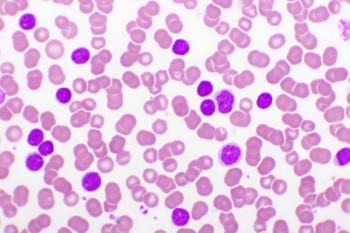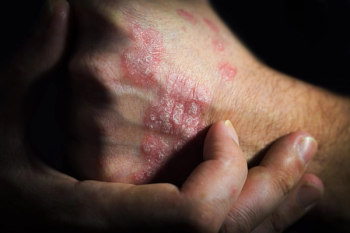
Cancer Mortality Among US Hispanic Population Varies by Cancer Type, Age, Region
Between 1999 and 2020, rates of liver cancer deaths increased for Hispanic men and women, and pancreas and uterine cancer deaths have increased for Hispanic women.
Despite a 2-decade decrease in overall
Between 1999 and 2020, rates of liver cancer deaths have increased for both Hispanic men and women, and pancreas and uterine cancer deaths have increased for Hispanic women. Disparities in CSM rates were also found by age group and US region.
These findings from a cross-sectional study were published in
The investigators used data from the CDC’s WONDER database, looking at age-adjusted cancer death rates among Hispanic individuals between January 1999 and December 2020. They also looked at CSM rates of other racial and ethnic groups in the United States for 2000, 2010, and 2020, and data were analyzed between October 2021 and December 2022.
The data showed that more than 12 million individuals died of cancer in the United States between 1999 and 2020. Of this group, 80.1% were non-Hispanic White, 11.4% were non-Hispanic Black or African American, 5.5% were Hispanic, 2.4% were non-Hispanic Asian or Pacific Islander, and 0.5% were non-Hispanic American Indian or Alaska Native, with no ethnicity stated for 0.2% of individuals.
During this time frame, the overall CSM rate among Hispanic individuals decreased by 1.3% (95% CI, 1.2%-1.3%) per year, declining more for men (average annual percent change [AAPC], –1.6%; 95% CI, –1.7% to –1.5%) than women (AAPC, –1.0%; 95% CI, –1.0% to –0.9%).
When looking at cancer type, CSM rates declined for most types, but increased for some. Among Hispanic men, CSM rates for liver cancer increased with an AAPC of 1.0% (95% CI, 0.6%-1.4%). Among Hispanic women, CSM rates increased for liver (AAPC, 1.0%; 95% CI, 0.8%-1.3%), pancreas (AAPC, 0.2%; 95% CI, 0.1%-0.4%), and uterine (AAPC, 1.6%; 95% CI, 1.0%-2.3%) cancers.
The investigators also found variation based on age and US region.
Overall CSM rates decreased in all age groups except for Hispanic men aged between 25 and 34 years, with an AAPC of 0.7% (95% CI, 0.3%-1.1%). After further analysis, the investigators found that mortality rates for colorectal cancer and testis cancer significantly increased between 2003 and 2020, with AAPCs of 2.4% (95% CI, 0.9%-3.9%) and 3.2% (95% CI, 1.6%-4.7%) respectively.
They also found that deaths related to stomach cancer and colorectal cancer increased for Hispanic individuals aged between 35 and 44 years, increasing by 1.1% and 1.8% annually, respectively. Additionally, the increases in uterine cancer among women were greatest among those aged 45 to 54 years, and 65 to 74 years.
When analyzing by US region, rates of liver cancer deaths increased significantly in the West for both Hispanic men (AAPC, 1.6%; 95% CI, 0.9%-2.2%) and women (AAPC, 1.5%; 95% CI, 1.1%-1.9%).
The study has several limitations, largely surrounding missing data.
“The database is limited by lack of information about cancer stage at diagnosis, treatments received, Hispanic subgroups, and the effects of individuals who migrate from 1 geographic location to another,” the investigators said. “Factors influencing cancer mortality rates were not accounted for in the CDC WONDER database; however, investigating income, insurance, educational level, and individual-level factors of Hispanic individuals is an important follow-up study.”
The investigators concluded that these differences in CSM trends are reflective of systemic health care inequities in the United States. They also noted that Hispanic patients are more likely to receive cancer diagnoses at more advanced stages—leading to worsened prognoses—and are one of several racial and ethnic minority populations that are underrepresented in cancer clinical trials.
“The observed disparities in cancer mortality may be associated with increases in cancer incidence, financial and cultural barriers to health care, lack of cancer screenings, and diagnosis at advanced stages of the disease,” the investigators said. “Future studies are needed to implement sustainable solutions to reverse these trends in the growing US Hispanic population.”
Reference
Pompa IR, Ghosh A, Bhat S, et al. US cancer mortality trends among hispanic populations from 1999 to 2020. JAMA Oncol. 2023;e231993. doi:10.1001/jamaoncol.2023.1993
Newsletter
Stay ahead of policy, cost, and value—subscribe to AJMC for expert insights at the intersection of clinical care and health economics.












































